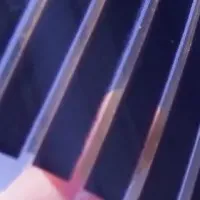
Risen Energy Achieves Groundbreaking 740Wp HJT Modules with 26.61% Efficiency
Risen Energy's Breakthrough in HJT Technology
In a remarkable achievement for the solar energy sector, Risen Energy Co., Ltd. has unveiled their new Hyper-ion HJT (Heterojunction Technology) modules, achieving an unprecedented average mass production power output of 740Wp. This milestone also comes with an impressive cell efficiency of 26.61%, raising the bar for solar technology applications globally. This innovation not only represents a leap forward in solar performance but also showcases the seamless transition from research and development to large-scale production.
Key Features of the Hyper-ion Modules
Risen Energy's innovative approach incorporates several key features that contribute to the efficiency and effectiveness of these new HJT modules:
1. Enhanced Metallization Process: The company has successfully reduced silver consumption to just 5mg/W, a significant decrease of 37.5% compared to previous TOPCon technologies. This reduction not only enhances cost-efficiency but also minimizes the environmental impact regarding non-silicon costs produced via stencil printing.
2. Low CTM Loss Rates: Manufacturing efficiency is crucial, and Risen Energy has optimized the encapsulation process to decrease CTM (Cell-To-Module) loss to an outstanding 1.8%. The structural integrity has been maintained with cell breakage rates falling below 0.03%, allowing for higher yield production.
3. Superior Power Yield in Various Conditions: These Hyper-ion modules are designed to perform exceptionally under diverse environmental conditions. With a temperature coefficient of -0.24%/°C and 90% bifaciality, they promise higher energy yields. In practical term applications, the modules have generated a power output mileage of 4.09% above that of TOPCon equivalents. In fact, a monthly assessment conducted at SGS Saudi Arabia indicated a peak monthly energy gain of 6.04% in August, affirming the modules' reliability in hotter climates.
Environmental Impact
The implications of these energy yields are significant. For a project generating 100MW, the Hyper-ion modules can produce approximately 3 million kWh annually while simultaneously reducing CO₂ emissions by around 2,880 tons. This translates into a minimal carbon footprint of just 376.5kg equivalent CO₂ per kWc produced, reinforcing the role of innovative solar technology in mitigating climate change.
Market Penetration and Future Aspirations
Risen Energy's HJT modules are already dominating the marketplace, garnering over 9 GW in specific tenders across China, and expanding operations into more than 50 countries across the Middle East and Southeast Asia. Notably, in regions with high irradiation like Saudi Arabia and the UAE, these modules reflect a verified energy gain exceeding 6%, significantly lowering the Levelized Cost of Energy (LCOE).
Dr. Yang Pochuan, the Dean of Risen's Global PV Research Institute, expressed their ambitious future objective, stating, "Our aim is to surpass 27% cell efficiency and produce monocrystalline modules exceeding 790W within the next three years. We also anticipate that our perovskite tandem technology will enable the production of modules exceeding 850Wp by 2028. This will aid in advancing the global transition towards net-zero emissions with 'China Solutions'."
Conclusion
As we look towards the future of renewable energy, Risen Energy’s breakthroughs in HJT technology mark a significant progress not only for the company but for the entire industry. This achievement not only highlights the potential for advanced solar solutions but also emphasizes the responsibility companies hold in curbing greenhouse gas emissions. With a clear vision and pioneering technology, Risen Energy is set to lead the charge in solar efficiency, setting the stage for a cleaner and sustainable future.
Topics Energy)










【About Using Articles】
You can freely use the title and article content by linking to the page where the article is posted.
※ Images cannot be used.
【About Links】
Links are free to use.